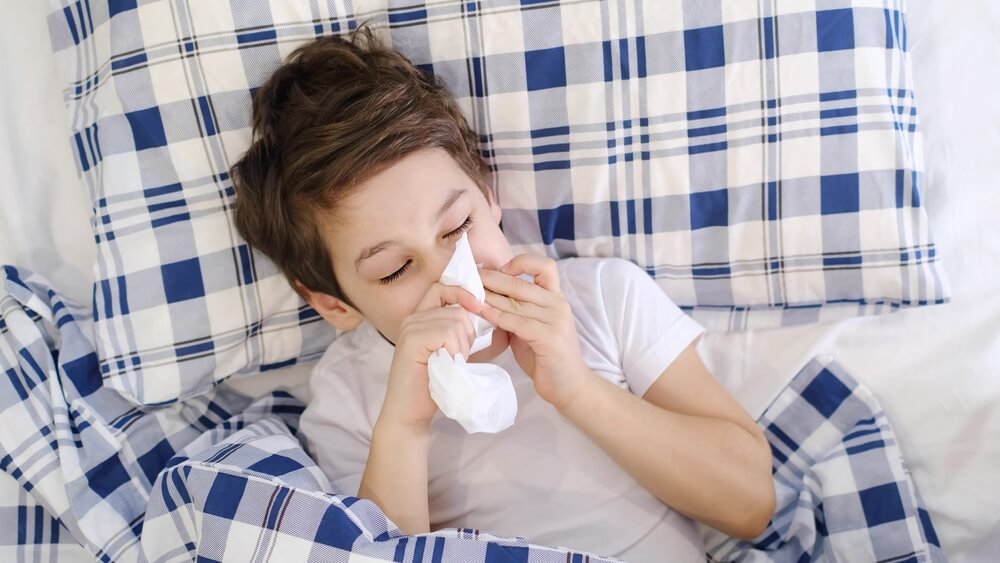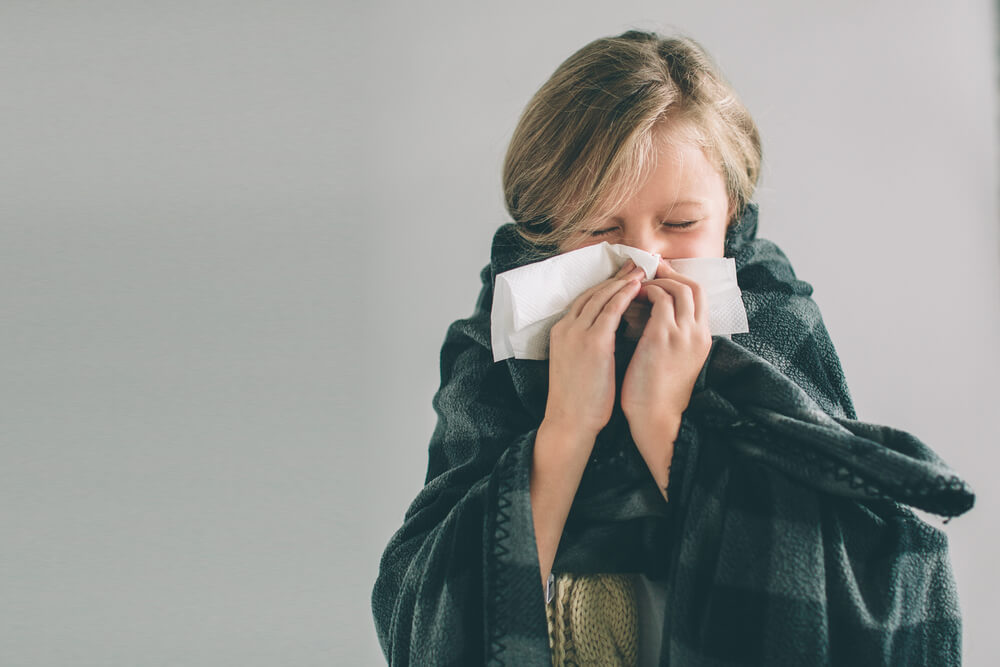The sinuses can be best described as air-filled spaces or cavities around the nasal passage, filled with mucous membranes. Together with the nose, the sinuses are an essential part of the upper respiratory tract. For the most part, sinuses help to moisten and filter the air we breathe. As air passes through the sinuses on its way to the lungs, it picks up moisture, and particles are filtered out, helping to keep the respiratory system moist and clean.
A sinus infection, also known as sinusitis, is a condition in which the tissue lining the sinuses becomes inflamed and swollen. When these cavities become blocked or infected, it can lead to various symptoms and discomfort. To better understand sinusitis in children, Doctor Ana and her team, excelling in pediatric care in Miami, Florida, have put together this comprehensive article about sinus infection in toddlers and kids in general.
After reading this article, feel free to find out more by reading another of our articles, Top 5 Reasons Why Your Baby Has a Running Nose.
The Role of The Sinuses And The Nose
As mentioned above, these are air-filled cavities around the nasal passage. There are four different types of sinuses:
- The maxillary sinus that’s located inside the face and around the cheek area.
- The ethmoid sinus is located around the bridge of the nose.
- The sphenoid sinus is located behind the nose, deep in the face, developing around adolescence.
- The frontal sinus, located around the forehead area, usually develops at seven years of age.
Also, as mentioned above, the sinuses and the nose play a distinctive role in the upper respiratory tract. The nose, apart from being responsible for smell, is also responsible for humidifying, warming, and filtering the air that passes through it.
Now, each sinus we mentioned a bit earlier can be described as an enclosed space training through the ostia, which are openings into the nose. The sinuses are lined by mucosa, which is similar to that which can be found on the nose’s lining. The ostium or ostia can become blocked by mucosal swelling or inflammation, and in other cases, they may be blocked by bony structures or tumors.

What is Sinusitis?
Sinus infections in children can be described as tissue inflammation in the sinuses near the nose. The infections usually develop after an allergic inflammation or after a cold. Typically, there are four major sinusitis types:
- Acute, where the infection symptoms last longer than four weeks, and the discomfort can be alleviated with adequate treatment.
- Subacute. In these cases, the infection won’t show signs of improvement with treatment during the initial stages, and the symptoms can last for up to 12 weeks.
- Chronic sinusitis develops due to repeated acute sinusitis or because of inadequately treated previous infections. With chronic sinusitis in children or toddlers, the little ones may experience symptoms for 12 weeks or longer.
- Recurrent acute sinusitis is when the inflammation happens at least four or more times a year.
What Causes Sinus Infections in Toddlers?
In some cases, a sinus infection might develop following a common cold or a URI (upper respiratory infection). The inflammation resulting from the URI impacts the nasal passages, potentially obstructing the entrances to the paranasal sinuses and setting off a sinus infection. Furthermore, allergies can play a role in sinusitis by causing inflammation in nasal tissues and a surge in mucus production. Various other potential factors can hinder the typical flow of sinus secretions, thereby elevating the likelihood of sinusitis. These factors encompass the following:
- Trauma to the nose
- Cleft palate
- Tooth infections
- Nose structure abnormalities
- Foreign objects that are stuck in the nose
- GERD or gastroesophageal reflux disease
When the secretion flow from the sinuses becomes blocked, bacteria may begin to form and grow, leading to sinusitis or sinus infection. The most prevalent acute sinusitis cases may be the following bacteria:
- Haemophilus influenza
- Moraxella catarrhalis
- Streptococcus pneumonia
In the case of chronic sinusitis, gram-negative rods, like pseudomonas, are more likely to be the culprit.
Signs of Sinus Infection in Kids
The significant signs of sinus infection in kids will mostly depend on the child’s age. The following are the most prevalent symptoms, but remember that each child may experience these symptoms differently.
Sinusitis Symptoms in Young Children
- A runny nose that lasts longer than seven to 10 days, with either clear, yellow, or green discharge.
- Swelling around the eyes
- Nighttime cough and sometimes daytime cough
- Typically, no headaches if the child is younger than five.
Symptoms of Sinus Infection in Older Kids and Adults
- Headaches.
- Bad breath.
- Cold or runny nose symptoms lasting longer than seven or ten days.
- Sore throat
- Cough
- Fever
- Swelling around the eye, that’s often worse in the morning
- Facial discomfort
- Dripping from the nose to the throat.
Also, these symptoms may be very similar to other medical problems or conditions. Because of that, you must take your child to your pediatrician to establish a proper diagnosis.

Diagnosing Sinus Infections in Children
Your child’s pediatrician will be more than capable of diagnosing sinusitis by examining your child’s symptoms and by performing a physical examination. There are some cases where pediatricians may recommend additional testing to confirm the diagnosis. These may be:
- Cta scans: These are diagnostic imaging tests that use a combination of computer technology ad X-rays to produce axial or horizontal images of the body. These can generate detailed images of any bodily area or structure, including fat, muscles, organs, and bones. Doctors may recommend CT scans to check whether the treatment has been successful, whether any complications have developed due to sinusitis, or in cases when surgery might be needed.
- Cultures from the sinuses: these laboratory tests often involve growing bacteria to aid in the diagnosis.
- Sinus X-rays: A diagnostic procedure employing invisible electromagnetic energy beams to generate visuals of inner tissues, bones, and organs onto photographic material. (While X-rays are not commonly employed, they might contribute to the diagnostic process if needed.)
Treatment for Sinusitis in Toddlers
How is sinusitis in toddlers and children treated? For the most part, the route the pediatrician will take will depend on several factors:
- The age of the child and their medical history
- Their condition
- Their tolerance for specific therapies, medications, or therapies
- Parental preferences and opinions
- How long the condition is typically expected to last
On that note, treatment of sinusitis may include the following:
- Acetaminophen for discomfort and pain.
- Antibiotics for at least two weeks.
- Decongestants.
- Nasal sprays to combat inflammation
- GERD medications.
- Installing a cool humidifier in the child’s room.
- Surgery to remove the adenoids.
- Endoscopic sinus surgery.
Antibiotics might be withheld during the initial 10 to 14 days, except when severe symptoms arise, such as fever, facial discomfort, or eye-area swelling. Surgical intervention should be contemplated only when alternative therapies prove ineffective.
For children experiencing persistent sinusitis or having undergone sinus surgery but still encountering sinusitis, consulting an allergist/immunologist might be necessary.
Antihistamines are ineffective in alleviating sinusitis symptoms unless the condition is allergy-induced.
Learn More
If you want to learn more about sinusitis and the most effective treatment options, schedule an appointment with Doctor Ana today.




